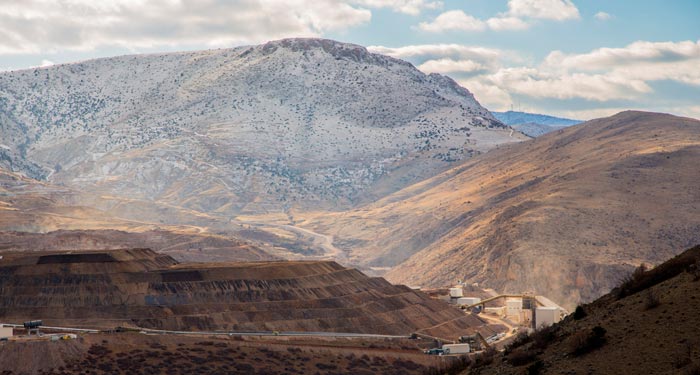Alacer Gold (TSX: ASR) says it can increase the heap-leach capacity at its 80%-held Copler gold mine in Turkey to extend oxide gold production beyond 2017.
Alacer has been extracting gold from oxide ores at Copler since 2012. While the property does have a large refractory sulphide resource, the firm has been looking at ways to maximize the high-margin oxide production.
It recently completed a heap-leach expansion study showing it could boost capacity by 14%, or nearly 7 million tonnes to 56 million tonnes. The expansion would cost US$30 million, which includes the previously planned phase-four heap-leach expansion. Alacer expects to spend US$25 million of that amount next year.
Meanwhile, Alacer is working on a technical review to re-optimize the mine plan with the expanded capacity, with results expected by March 2015.
BMO Capital Markets analyst Brian Quast notes that while Alacer could add oxide ounces from the exploration ground surrounding the Copler pit, the initial source of ore will be from the 4.2 million tonnes of ore grading 1.2 grams per tonne, which is classified as waste in the current mine plan due to previous pad constraints.
However, he reckons the company will likely place this material on the leach pad after 2018. “While the additional oxide material adds to the production profile as the sulphide project ramps up, any additional capital spent on expanding the leach pad would need to come from other stakeholders, since the sulphide expansion is not yet fully funded,” he writes. Quast has lowered his $2.75 target to $2.50, noting the gold price has fallen since his last update in October. He has a “sector perform” rating on the stock.
A June 2014 feasibility study shows Alacer could process sulphide ore by adding a whole ore pressure oxidation (POX) circuit to extend Copler’s mine life to 20 years. The study estimates the circuit’s start-up costs at US$633 million. With the heap leach and POX circuits, the mine could produce another 3.2 million oz. gold at all-in costs of US$810 per oz. over the mine’s life.
The junior expects an environmental impact assessment approval for the sulphide project by year-end, with construction starting in the second quarter of 2015.
Raymond James analyst Phil Russo, viewing the Alacer as a leading junior story in the gold sector, says the firm should be able to fund part of its sulphide project with its strong cash position. He points out that Alacer ended the third quarter with US$320 million in cash and no debt. Russo rates the stock as “outperform.”
Alacer’s CEO Rodney Antal says with the heap-leaching capacity now confirmed, the company is moving ahead with technical work on a second heap-leach pad west of the Copler mine. The firm intends to produce an engineered design for the pad, with detailed costs estimates over the next year. “This will be an important step to provide us with additional oxide production options into the future,” Antal said.
The company uses a conventional crush, agglomeration, heap-leach and gold-recovery circuit to process the mine’s oxide ores. For 2014, it is guiding attributable gold production of 160,000 to 180,000 oz. at all-in costs of US$730 to US$780 per oz.
In mid-December Alacer sold its first copper concentrate from the Copler mine, as it finished commissioning its sulphidization, acidification, recycling and thickening plant. The facility can provide 94% copper recovery and produce 3.3 tonnes of copper per day when in operation.
Alacer shares recently closed at $2.09, within a 52-week window of $1.77 to $3.65.


Be the first to comment on "Alacer boosts leaching capacity at pler"